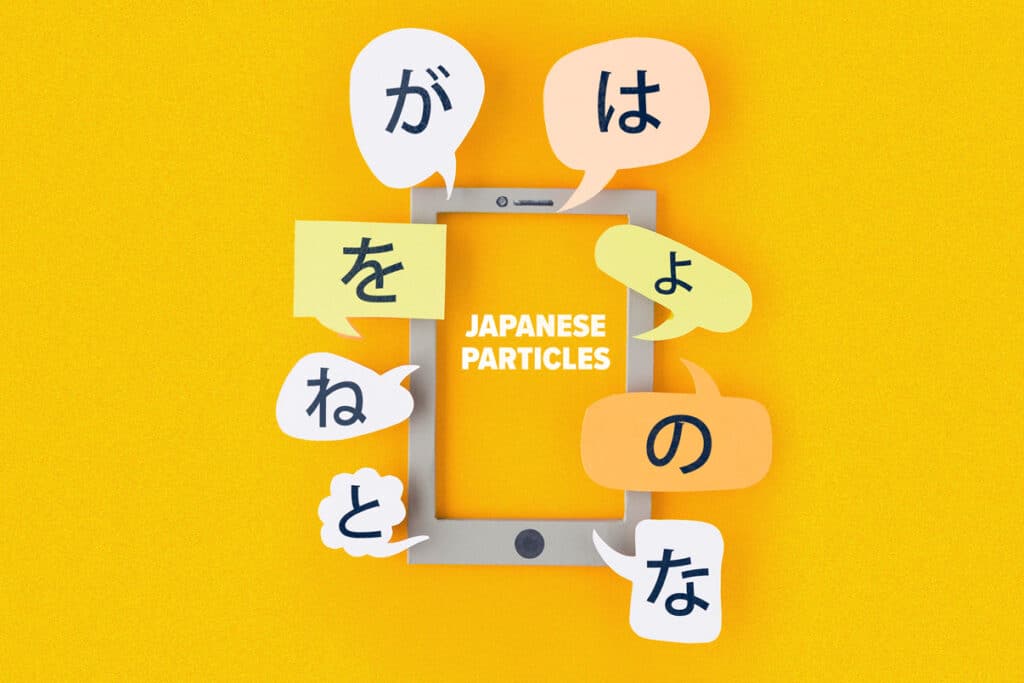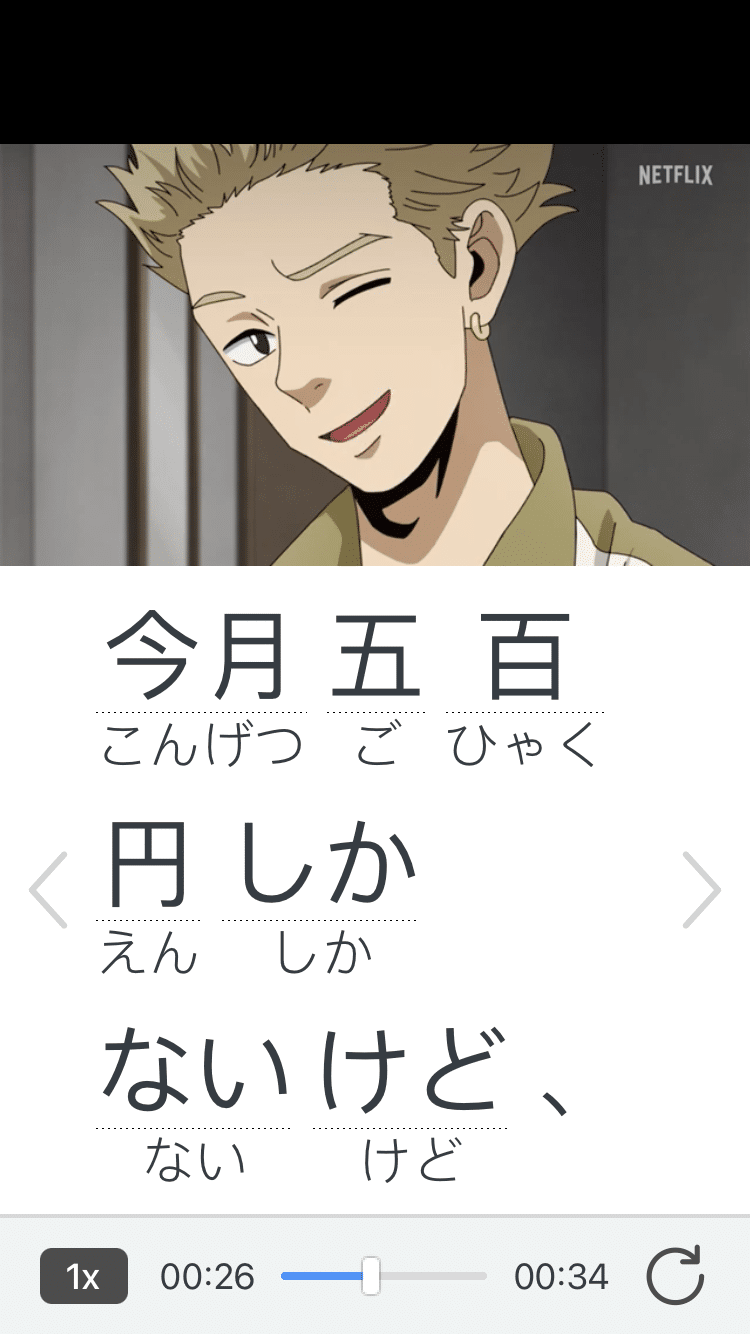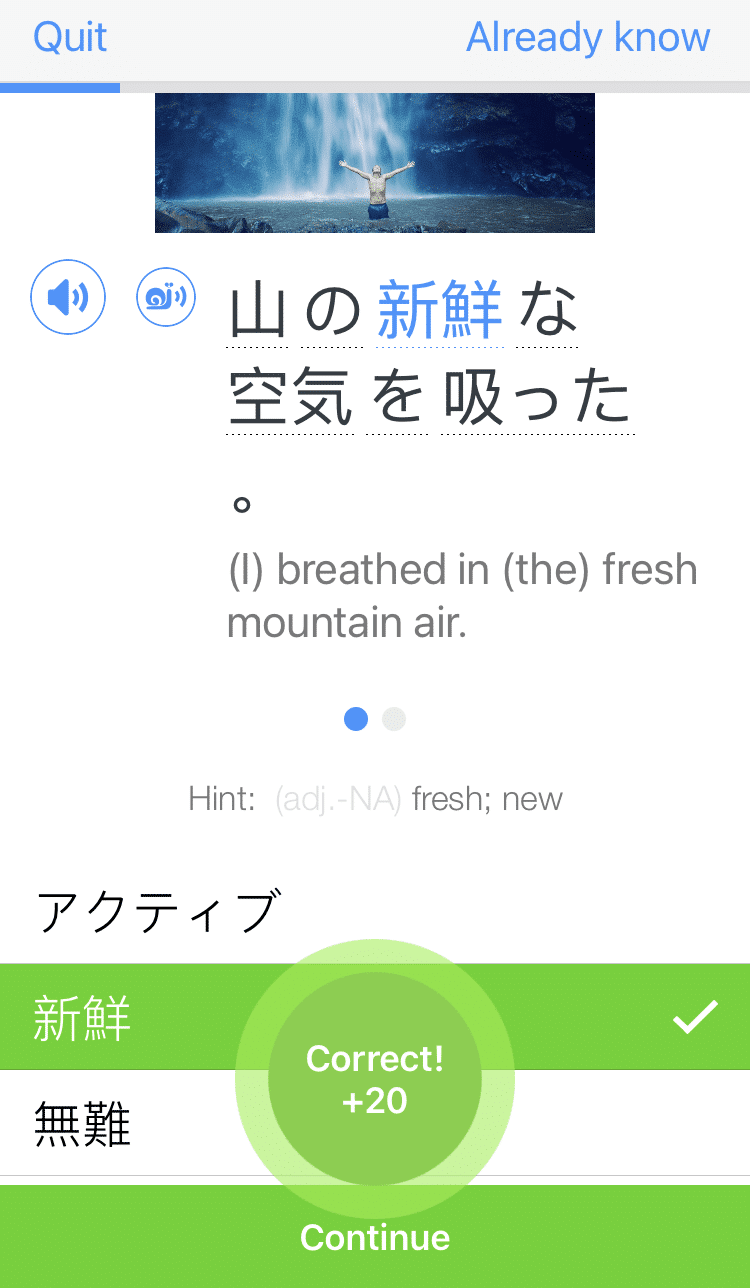Contents
- 1. が (Subject Marker)
- 2. は (Topic Marker)
- 3. か (Question Particle)
- 4. を (Direct Object Particle)
- 5. と (Connecting Particle)
- 6. の (Possession Particle)
- 7. も (Addition Particle)
- 8. に (Location and Time Particle)
- 9. で (Location Particle)
- 10. へ (Direction Particle)
- 11. ね (Confirming and Agreeing)
- 12. よ (Emphasis and Exclamation)
- 13. なくちゃ / なきゃ (Expressing Obligations)
- 14. さ / ぞ (Emphasis Used by Men)
- 15. な (Expressing Opinions)
- 16. ちゃった (Expressing Regret)
- 17. もん (Expressing Dissatisfaction)
- And One More Thing...
17 Frequently Used Japanese Particles [Plus Usage Notes]

Japanese particles, also known as 助詞 (じょし) or てにをは , are small words in hiragana that come after the words they modify.
They don’t mean anything on their own, but you’ll see them in nearly every sentence. Rather, they tell you how words within a sentence are related. When talking about coffee, for example, the particle tells us if it was given to you, taken from you or included with your breakfast.
Learn how to use 17 Japanese particles in this post, including some must-know Japanese endings like ね and よ .
Download: This blog post is available as a convenient and portable PDF that you can take anywhere. Click here to get a copy. (Download)
| Japanese Particles | Romaji | Function |
|---|---|---|
| が | ga | - Mark the subject - Follow a question word |
| は | wa | - Mark the sentence topic - Show contrast - Add emphasis |
| か | ka | - Indicate a question - List options and alternatives (“or”) |
| を | o | Mark a direct object |
| と | to | - List multiple responses to a question - Show collaborative relationship ("with") |
| の | no | - Indicate possession - Ask informal questions |
| も | mo | Comment on multiple things (“too”) |
| に | ni | - Mark time, location and direction - Show verb's destination - Mark indirect objects - Show that something exists |
| で | de | - Show where action occurs - Indicate the use of something |
| へ | e | Show destination/direction of movement |
| ね | ne | - Politely end a sentence - Seek agreement |
| よ | yo | Mark definitive end to sentence |
| なくちゃ
なきゃ | nakucha nakya | Express that something must be done |
| さ
ぞ | sa zo | Emphasize men’s statements |
| な | na | - Express opinions (mostly used by men) - Seek agreement |
| ちゃった | chatta | Express regret (mostly used by women) |
| もん | mon | - Express dissatisfaction - Indicate an excuse - Show an emotional response |
1. が (Subject Marker)
が is used to:
- Indicate the subject of a sentence
- Follow a question word (like who, what or where)
が lets us know the sentence’s subject (i.e., who or what it’s about). The only exception is that sometimes は (which we’ll learn next) does the job for it.
But to keep it simple, know that any time the person speaking is giving new information, が is used.
You’ll also find that sometimes, the subject of a sentence in Japanese is different from the subject in English. Take this sentence for example:
私は猫が好きです。
(わたしは ねこが すきです。)
I like cats.
In English, the subject would be “I.” But in Japanese, the subject is actually “cats.” This is because any time the following verbs are used, が follows the object instead of the subject:
Let’s take a look at a few more examples of が:
私は蜘蛛が怖いです。
(わたしは くもが こわいです。)
I’m afraid of spiders.
私は納豆が好きじゃないです。
(わたしは なっとうが すきじゃないです。)
I don’t like natto.
誰がケーキを食べましたか?
(だれがケーキをたべた?)
Who ate the cake?
In the last sentence, “who” is a question word, which is why が comes after 誰 (だれ). Any time a question word is the subject (like who, what and where), the particle you use is が.
2. は (Topic Marker)
は is used to:
- Mark the topic of the sentence (the thing we’re going to talk about/comment on)
- Show contrast
- Add emphasis
が and は are similar, but instead of indicating the subject, は tells us what or who the sentence is about. For example:
私はケーティです。
(わたしはけーてぃです。)
I am Katie.
キムさんは日本人です。
(キムさんはにほんじんです。)
Kim is Japanese.
When showing contrast, a useful tip is to think of the Japanese particle は to mean ” as for…” or “speaking of…”. For example:
映画は見ないけど本は読む。
(えいがはみないけどほんはよむ。)
I don’t watch movies, but I do read books.
Or, say you and your roommate are in a pet store. An employee comes up to you and asks which type of pet you like. You could say:
私は猫が好きです。
(わたしはねこがすきです。)
I like cats. (literally, “As for me, I like cats.”)
But if your roommate likes dogs instead, she would use は to show contrast. For example:
犬は好きです。
(いぬは すきです。)
I like dogs.
3. か (Question Particle)
か is used to:
- Indicate a question is being asked
- List options and alternatives (similar to meaning “or”)
When asking a question in Japanese, add か to the end of the sentence. For example:
誰が先生ですか?
(だれがせんせいですか?)
Who‘s the teacher?
今何時ですか?
(いまなんじですか?)
What time is it?
Another common way to use か is to list options and alternatives. For example:
猫か犬か、どちらが好きですか?
(ねこかいぬか、どちらがすきですか?)
Do you like cats or dogs? (literally, “Cats or dogs, which one do you like?”)
田中さんか中谷さんか、誰が先生ですか?
(たなかさんかなかたにさんか、だれがせんせいですか?)
Who’s the teacher, Tanaka or Nakatani? (literally “Tanaka or Nakatani, which one is the teacher?”)
4. を (Direct Object Particle)
を is used to:
- Mark a direct object
A direct object is a thing being acted upon. For example, when you say “I’m listening to a song,” song is the direct object because it’s the thing being listened to.
In modern Japanese, を as a particle is pronounced as “o,” not “wo.”
私は日本語を勉強しています。
(わたしは にほんごを べんきょうしています。)
I am studying Japanese.
私は猫を見ます。
(わたしは ねこを みます。)
I see a cat.
5. と (Connecting Particle)
と is used to:
- List more than one response to a question
- Show who you’re doing something with
When listing items in Japanese, think of と as “and.” For example:
猫とチンチラが好きです。
(ねことちんちらがすきです。)
I like cats and chinchillas.
日本語と英語が話せます。
(にほんごとえいごがはなせます。)
I can speak Japanese and English.
When listing more than two items, add と to the end of each one on the list.
The other way to use と is to show relationships. In these situations, you can think of it as “with.” It’s often followed by 一緒に (いっしょに), which means “together,” and goes after the particle は.
(私は) 彼と一緒に日本語を勉強しています。
([わたしは] かれと いっしょに にほんごを べんきょうしています。)
I am studying Japanese with him.
今、誰と話していますか?
(いま、だれと はなしていますか?)
Who are you talking with/to right now?
お母さんと話しています。
(おかあさんと はなしています。)
I’m talking with my mom.
6. の (Possession Particle)
の is used to:
- Indicate possession (owning something)
- Ask informal questions
To say something belongs to someone, simply tack の onto any noun. For example:
それは誰の猫ですか?
(それはだれのねこですか?)
Whose cat is that?
それは私の猫です。
(それはわたしのねこです。)
That’s my cat.
うわ、猫の目がとてもきれいです!
(うわ、ねこの めが とてもきれいです!)
Wow, the cat’s eyes are really beautiful!
Be careful with the last sentence. If we were to say 猫の目はとてもきれいです , what was a nice compliment with が suddenly becomes a veiled insult. Changing が to は makes this sentence sound like, “Well, the cat’s eyes are beautiful… but the rest of it isn’t.”
の can also be used to ask informal questions. Women and children mainly use it this way, so you might say it’s the more cute or feminine way to ask a question.
どこいるの?
Where are you?
いいの?
Is this ok?
ここでいいの?
Is here okay?
どうしたの?
What’s the matter?
7. も (Addition Particle)
も is used to:
- Make a comment about more than one thing
- Mean “too” or “also”
This is a cool particle similar to the Pokemon Ditto—it can attach onto and even replace other particles to mean “also” or “too.” It shows that whatever we said about the first thing applies to the second as well. For example:
私は猫が好きです。犬も好きです。
(わたしはねこがすきです。いぬもすきです。)
I like cats. I also like dogs.
私は日本語を勉強しています。中国語も勉強しています。
(わたしはにほんごをべんきょうしてます。ちゅうごくごもべんきょうしています。)
I’m studying Japanese. I’m studying Mandarin, too.
It can also mean “both.”
猫か犬か、どっちが好きですか?
(ねこかいぬか、どっちが好きですか?)
Do you like dogs or cats?
どっちも! 猫も犬も好きです。
(どっちも! ねこもいぬもすきです。)
Both! I like cats and dogs.
8. に (Location and Time Particle)
に is used to:
- Mark time, location and direction
- Show the destination of a verb
- Mark indirect objects
- Show that something exists
When using a verb of motion (such as “to go”), you can use に to say where you’re going to. For example:
今日ディズニーランドに行くよ!
(きょう でぃずに-らんどにいくよ!)
I’m going to Disneyland today!(Informal)
どこに住んでいるのですか?
(どこにすんでいるのですか?)
Where do you live?
昨日どこに行ったのですか?
(きのうどこにいったのですか?)
Where did you go yesterday?
In the last sentence, の is used to emphasize that you’re seeking an explanation from someone.
に also marks the indirect object of a sentence or “who” gets the result of an action. For example:
学生は先生に宿題を提出した。
(がくせいは せんせいに しゅくだいをていしゅつした。)
The student hands their homework to the teacher. (informal)
私は友達に笑顔を見せた。
(わたしは ともだちに えがおを みせた。)
I smiled at my friend. (Informal)
In these sentences, the teacher and the friend are the indirect objects because they’re the ones who receive the action (being handed homework and being smiled at).
Lastly, に shows where something exists. The structure for this usage is:
(Somewhere) に (something) が (ある/いる)
The verb いる is used with living, animate objects whereas the verb ある is used with non-living, inanimate objects. For example:
机の上に鉛筆がある。
(つくえの うえに えんぴつが ある。)
There’s a pencil on the table. (Informal)
箱の中に猫がいる。
(はこのなかに ねこが いる。)
There’s a cat in the box. (Informal)
9. で (Location Particle)
で is used to:
- Show where an action takes place
- Show the use of something
Unlike に, there’s no movement involved with the Japanese particle で. This particle is used to show the location of an activity.
Let’s say you asked someone where they went the previous day, and they said they went to a pet store. You might then ask:
へえ?そこで何をしましたか?
(へえ?そこでなにをしましたか?)
Oh? What did you do there? (literally, “What did you do at that place?“)
日本で日本語を勉強しています。
(にほんで にほんごを べんきょうしています。)
I am studying Japanese in Japan.
で is also used to express the usage of something. For example:
車で、来ました
(くるまで、きました。)
I came by car.
10. へ (Direction Particle)
へ is used to:
- Show the destination or direction of a movement
The particle へ can be used to describe where you’re going, just like the particle に. But it doesn’t always carry the same nuance.
へ can carry a stronger feeling of “towards” than “to,” so it’s important to pay attention to what context it’s being used in.
東京 に 行った。
(とうきょう に いった。)
I went to Tokyo. (Informal)
東京 へ 行った。
(とうきょう へ いった。)
I went to Tokyo. (Informal)
Whether に or へ is used, both of these sentences mean, “I went to Tokyo.”
But if you use へ, this could also be read as “I went/set off toward Tokyo,” leaving the possibility that you didn’t actually get to Tokyo but became distracted along the way.
Unlike に, the particle へ can come before の, allowing a noun to be used. Japanese people often use this structure to make metaphorical statements, like this one:
平和への歩み。
(へいわへの あゆみ。)
A step toward peace.
11. ね (Confirming and Agreeing)
ね is used to:
- Politely end a sentence
- Seek agreement or confirmation
ね is a very common sentence-ending particle and a polite way to end a sentence.
Listen to any conversation between Japanese women, and you’ll hear lots of ね. It’s used at the end of a sentence to seek confirmation, but it’s different from か in that it’s not outright asking a question.
To indicate uncertainty, say ね with a rising tone. When looking for agreement, use a softer, lower tone.
Think of it as a way to ensure everyone in the conversation is on the same page. It’s like saying “Isn’t it?” or “Right?”
寒いですね。
(さむいですね。)
It’s cold!
あの女はきれいですね。
(あのおなはきれいですね。)
That woman is pretty.
このかばんは高いですね?
(このかばんはたかいですね?)
This bag is expensive, isn’t it?
12. よ (Emphasis and Exclamation)
よ is used to:
- Indicate a definitive end to a sentence
よ is one of the most useful sentence endings in the Japanese language. It’s used equally by both genders and is less passive than ね.
The speaker is absolutely sure of what they’re saying, and they’ve already formed a strong opinion or have confirmed the statement.
その映画はすごいですよ。
(そのえいがはすごいですよ。)
That movie was awesome.
暑いですよ!
(あついですよ!)
It’s hot!
分かるよ!
(わかるよ!)
I understand!
13. なくちゃ / なきゃ (Expressing Obligations)
なくちゃ and なきゃ are used to:
- Express that something must be done
I had a hard time with this one because it was never taught in the classroom, but you’ll certainly hear なくちゃ and なきゃ a lot. They’re colloquial replacements for the more formal phrase なければならない .
The standard meaning is that you must do something and there’s no way to get out of it. There’s some regret behind the words but it can’t be helped!
なくちゃ is more common, but the younger generation often uses なきゃ, which is a shortened version.
勉強しなくちゃ。
(べんきょうしなくちゃ。)
I have to study.
食べなきゃ。
(たべなきゃ。)
I have to eat.
今、行かなくちゃ。
(いま、いかなくちゃ。)
I have to leave now.
14. さ / ぞ (Emphasis Used by Men)
さand ぞ are used to:
- Emphasize men’s statements
Men mainly use さ to add emphasis to their statements. It’s extremely rare for women to use this.
The use of さ conjures up nostalgic images of Japanese men fanning themselves and listening to the sound of wind chimes on a hot summer’s day while commenting on the suffocating heat. In some ways, it can be used as the stronger, manlier version of よ.
For even more emphasis, draw out the さ sound.
あのさ
Hey/You know…
これさ!
This is the one!
重いさぁ!
(おもいさぁ!)
It’s heavy!
ぞ is another common word for men to end their sentences with proper emphasis and unswayed judgment.
The ぞ sound is often drawn out when men use it to express excitement and energy. If you’re an anime fan, you’ve probably heard male characters using ぞ when they’re emoting, as anime characters are prone to do.
In comparison, if you hear a girl using it, she might be trying to be “one of the guys.”
行くぞ!
(いくぞ!)
Let’s go!
飲むぞ!
(のむぞ!)
Let’s drink!
見るぞ!
(みるぞ!)
Let’s look/watch!
15. な (Expressing Opinions)
な is used to:
- Express opinions (commonly used by men)
- Seek confirmation
な is often used by men usually in the same age group. It sounds similar to ね, with a rising intonation, but the sound comes off rougher. It’s also used much more in casual situations than ね, which is more acceptable in a work environment.
な is a way of expressing an opinion or feeling without asserting yourself too much. However, it can also be used to confirm information, as in the first example here:
おい! 喫茶店にいくんだよな?
(おい! きっさてんにいくんだよな?)
Hey! Aren’t you going to the coffee shop?
その犬はかわいいな。
(そのいぬはかわいな。)
That dog is cute.
変だな。
(へんだな。)
That’s strange, isn’t it?
16. ちゃった (Expressing Regret)
ちゃった is used to:
- Express regret (commonly used by women)
ちゃった is a very popular way to end a sentence, used most commonly by women. It expresses regret or doing something without thinking. It’s equivalent to the English slang, “My bad.”
As for structure, the verb endings are changed depending on whether they’re -ru, -tsu or -u verbs. Then, add ちゃった onto the ending of the verb.
忘れちゃった。
(わすれちゃった。)
I forgot.
食べちゃった。
(たべちゃった。)
I ate (it all).
ちゃった can also be used to mean something has happened “regrettably,” like this:
友達の魚が死んじゃった。
(ともだちのさかながしんじゃった。)
My friend’s fish died (regrettably).
17. もん (Expressing Dissatisfaction)
もん is used to:
- Express dissatisfaction
- Indicate an emotional response
- Indicate an excuse
もん is a casual way to express dissatisfaction with a turn of events or an emotional response. It also works when you need to explain your actions or reactions. Certain words like だって are sometimes placed at the beginning of the sentence to control the level of emotion while explaining oneself.
もん isn’t that common, but it’s an adorable way to end a sentence. A word of advice: Avoid this ending unless you’re intentionally trying to be babyish!
分からないもん!
(わからないもん!)
I don’t understand!
だって、出来ないもん!
(だって、できないもん!)
I just can’t do it!
だって、温泉に行きたいんだもん
(だって、おんせんいいきたいんだもん)
Aww, but I want to go to the onsen.
Think of these 17 Japanese particles as the wire to a necklace. With them, you’ll be able to string together any sentence you desire.
The more you practice them, the more naturally they’ll come to you.
Watch Japanese TV, listen to Japanese songs and consume a variety of Japanese media to get a feel for how native speakers use particles. On a program like FluentU, you can follow along with subtitled video clips paired with learning tools.
FluentU takes authentic videos—like music videos, movie trailers, news and inspiring talks—and turns them into personalized language learning lessons.
You can try FluentU for free for 2 weeks. Check out the website or download the iOS app or Android app.
P.S. Click here to take advantage of our current sale! (Expires at the end of this month.)

Happy learning!
Download: This blog post is available as a convenient and portable PDF that you can take anywhere. Click here to get a copy. (Download)
And One More Thing...
If you love learning Japanese with authentic materials, then I should also tell you more about FluentU.
FluentU naturally and gradually eases you into learning Japanese language and culture. You'll learn real Japanese as it's spoken in real life.
FluentU has a broad range of contemporary videos as you'll see below:

FluentU makes these native Japanese videos approachable through interactive transcripts. Tap on any word to look it up instantly.

All definitions have multiple examples, and they're written for Japanese learners like you. Tap to add words you'd like to review to a vocab list.

And FluentU has a learn mode which turns every video into a language learning lesson. You can always swipe left or right to see more examples.

The best part? FluentU keeps track of your vocabulary, and gives you extra practice with difficult words. It'll even remind you when it’s time to review what you’ve learned. You'll have a 100% personalized experience.
Start using the FluentU website on your computer or tablet or, better yet, download the FluentU app from the iTunes or Google Play store. Click here to take advantage of our current sale! (Expires at the end of this month.)







